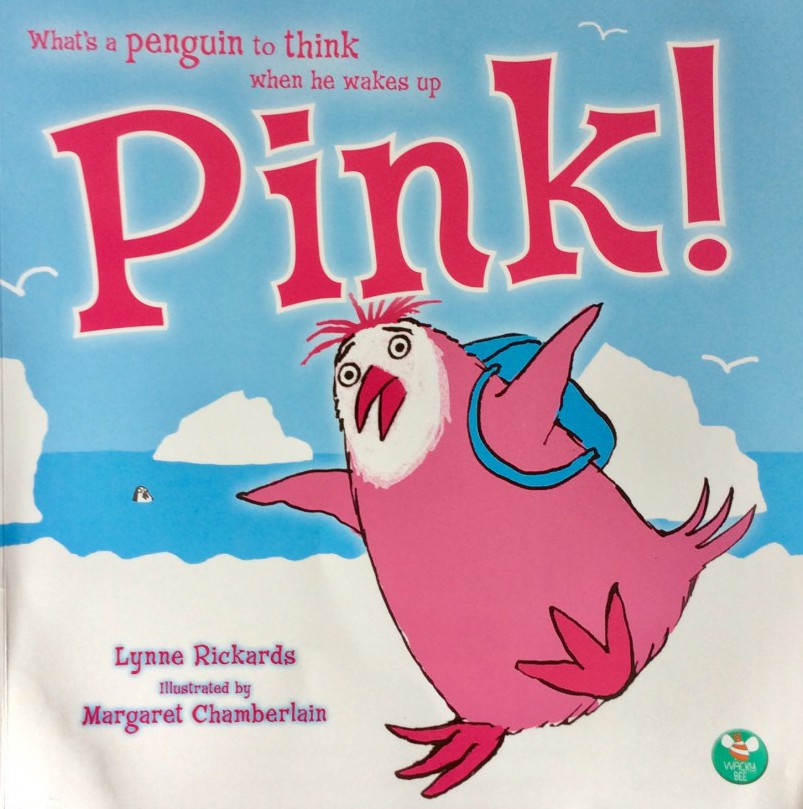Inspiring Young Readers
 posted on 06 May 2019
posted on 06 May 2019
Pink by Lynne Rickards, illustrated by Margaret Chamberlain
Like most adults, young children like to be relatively inconspicuous so that they can fit in with the crowd and feel safely at home. Despite this tribal tendency, we also know that everyone has individual characteristics, traits and circumstances which mean that differences are acceptable and valued. But it sometimes takes something drastic to happen for all this to make sense. In this case, Patrick the Penguin wakes up one sunny morning to find that he has inexplicably turned pink overnight! His mother seems unperturbed, but recommends a visit to see Dr Black for a diagnosis. She is puzzled when she consults her ‘ABCs of Health’ book which doesn’t seem to feature any information about this unusual change in colour and brightly suggests ‘Perhaps you’ll get used to being pink …’
Patrick is unhappy about this advice, particularly as he is convinced that boys can’t possibly be pink. Or perhaps they can, because when his dad looks at his ‘Birds of the World’ book he points out to his son that at least half of pink flamingos are male. This is all very well but Patrick is getting teased at school for looking so different and so he decides to go off on a trip to Africa to see the flamingos, hopefully learning something about how to deal with his new pink identity.
He swims for seven days and seven nights and when he arrives he finds that the flamingos are curious about him but friendly. He soon learns that his pink colour makes him feel that he has something in common with his new friends. The problem is that his stumpy body shape and short neck is not at all helpful when trying to catch food from the seabed. He also realises that he can’t possibly stand on one leg as they are able to do so proficiently or to fly with them to the nesting ground.
He decides to return home to the South Pole and is warmly welcomed by his parents and school friends who have missed him a lot. He impresses them and his teacher with his talk about his travels and his prowess at swimming such a long way. He and his friends realise that penguins, whether they are black and white or pink can do so many things that flamingos can’t. It seems that they have realised the importance of valuing commonality and community rather than superficial differences. ‘Being different wasn’t so bad after all’ is the final message as mum tucks him into bed.
I look forward to using this brightly illustrated picture book with young children as a way of discussing gender stereotypes and talking about variety of individual differences. It would also be a way into thinking about why birds like penguins and flamingos are so different and how this relates to their natural environment. I like the way that the lively pictures by Margaret Chamberlain are very varied on each page with a range of layouts and dominant colours to keep the reader interested and focussed. Most importantly, this is a well told story with a positive ending that emphasises the importance of friendship.
Karen Argent
May 2019